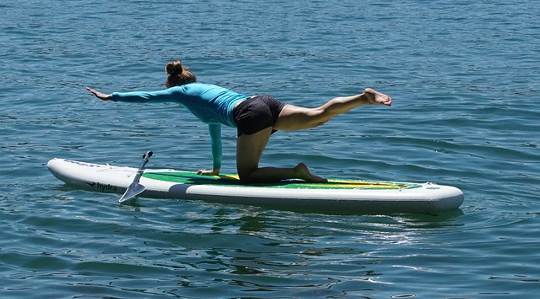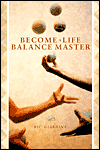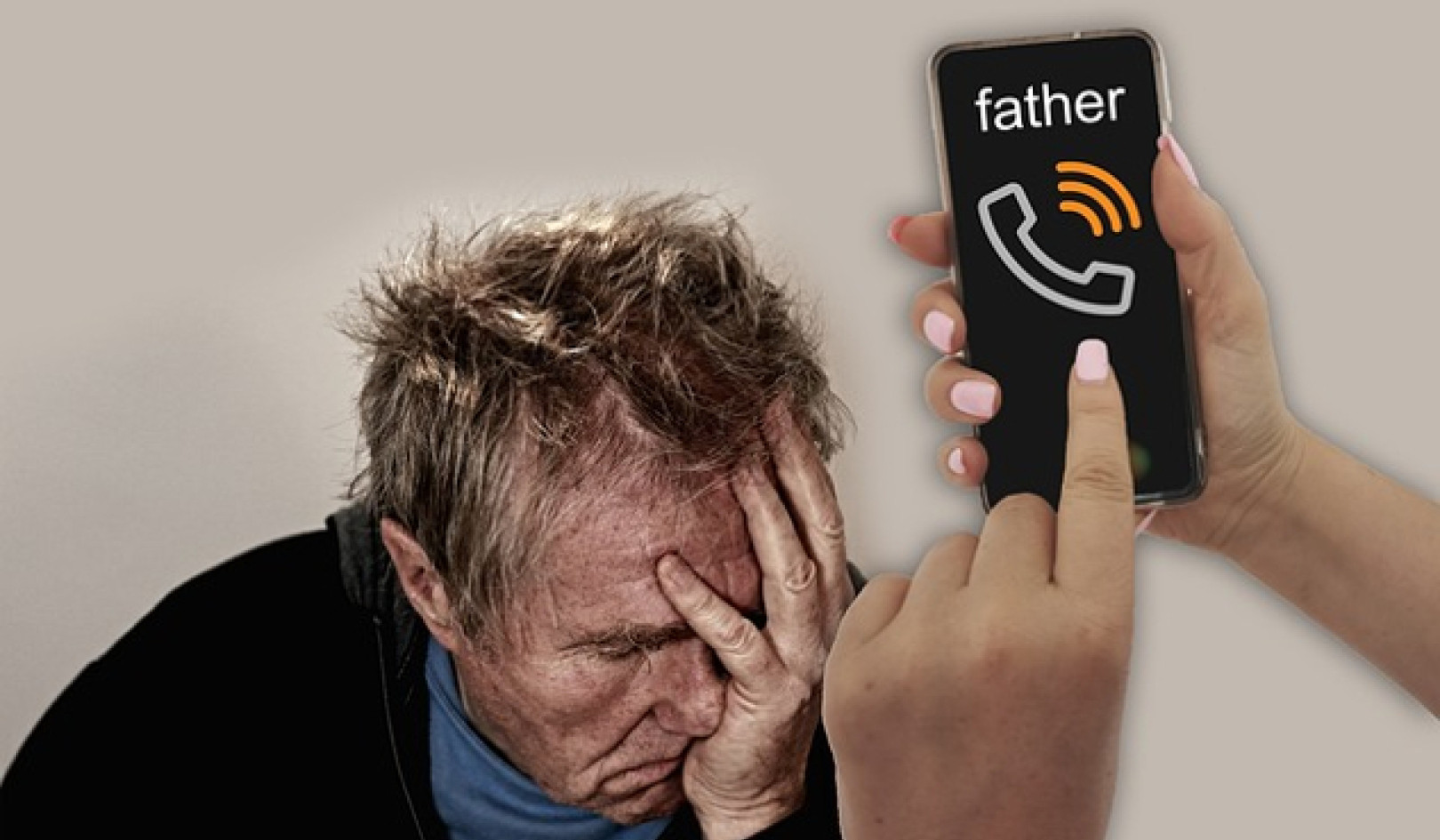
Some of the first things that often need to be overcome when seeking to engage a higher degree of balance in one's life are the all-too commonly-held myths and misconceptions about Life Balance and how to achieve it.
The purpose of this chapter is to assist you to navigate through and around those myths. Here are four of the most prevalent ones in our society.
MYTH No. 1: LIFE BALANCE IS ACTUALLY ACHIEVABLE
For many years I have taught courses involving Life Balance in a variety of settings such as universities, corporations, not-for-profit organizations, government agencies, and public seminars. You may find it interesting to know that one of the very first things I tell people is that it is impossible to actually achieve Life Balance! What I mean is that life Balance is not achievable as most people tend to think of it.
My sense is that we most often imagine Life Balance as a state of static equilibrium in which things do not change. In this magic state of stasis, there are just enough of each of life's activities to make almost anyone happy. There is no stress. We have achieved Nirvana.
In the cold light of reason and experience, however, it must become clear to every one of us that in a constantly changing world our individual sense of balance -- our personal Life Balance equation -- will have to be constantly changing as well. There is no way that we can possibly find an answer -- the answer -- and tether ourselves to it for life with the expectation that it will keep us perennially happy. Our lives move much too fast for that.
Why, then, a book on the subject of achieving Life Balance if it cannot actually be achieved? The answer lies in the knowledge that there is much to be gained from the act of simply seeking Life Balance and that a fabulous harvest can still he reaped by striving after the goal even knowing that the goal cannot actually he reached. Consider that by seeking and moving toward a more balanced life you will achieve results and receive benefits that will make life better for you and for those around you regardless of whether or not you reach the ultimate goal of achieving perfect Life Balance.
But how do you effectively chase after a goal that is constantly moving, changing shape, and re-creating itself? The answer is that you must use methods that are themselves constantly moving, changing, and being re-created and that will result in you being able to constantly move, change, and re-create yourself.
The point is that you should not delude yourself into thinking that at some point you will have learned everything you need to know about Life Balance and that you will go on to achieve it and leave the struggle behind. Living life in at least some semblance of balance is a process that requires constant vigilance and action.
MYTH NO. 2: THE REAL ISSUE IS WORK/LIFE BALANCE
You may be asking, "Isn't this really just about realizing that I'm working too much?" Well, maybe and maybe not. It is certainly possible that you are working too much because many people are, but then again, the amount of time and attention you are already spending on your job may be perfect for you. It is even possible that you might want to increase the amount of time you spend in work-related activities in the future.
It is not the purpose of this book to tell you what you should be doing with your life -- that's entirely up to you. What is your choice with respect to your work? Lots of people are able to work nearly around the clock, and they do it with a sense of fulfillment because it is their choice to do so. We might even say that they have achieved balance in their lives, because their lives reflect what is important to them and they have chosen to do those things that are important.
When we meet these people, we are often surprised to discover that they seem to get energized from their seemingly overzealous work schedule rather than having it drain them. This is the case because they love what they do, and they have made it their choice to do as much of it as they can. They are, in a sense, being fed by their work.
If, however, you are finding that your life seems to revolve around your job at the expense of the rest of your life, it is likely that you are yet another victim of the myth of the work/life-balance dichotomy. Let me explain.
Everywhere there are books, magazine articles, seminars, tapes, and radio and television talk shows discussing the issue of "work/life balance." The mental image this creates for each of us is one in which your work is over "here" and the rest of your life is over "there," and your responsibility is to work out the conflict if there is any -- and there usually is.
A standard representation of this dichotomy is the traditional balance with a beam, a fulcrum, and a dish suspended from each arm on either side of the fulcrum such as that carried by Justice in most statues depicting her. This "either/or" mind-set forces us to believe we much choose between our work and the rest of our lives. Couple that frame of reference with the fact that most people absolutely must work in this day and age, and the results are clear: work comes first, and do your best with whatever time is left over. For most of us that construct leaves us with the uncomfortable but accurate feeling that the bulk of our lives definitely resides on the work side of the scale. Rarely is there any "balance" involved.
I don't like to think in terms of a work/life--balance dichotomy, and I do not talk about Life Balance in that construct. The truth is that our lives are totalities which require a mindset that takes into account a high degree of integration, and this integration includes all the things that are necessary and important to us in our lives.
For years the image I have used to represent Life Balance is that of a circus bear attempting to hold his equilibrium on a flat circular platform, and that platform itself is balanced on a large ball. The circular platform is divided into slices of varying sizes like a pie, with each slice representing some element of your life. You are the bear.
We are never totally in balance, i.e., the platform is never fully at rest and parallel with the ground. Instead, life is a constant effort to keep the platform reasonably level. At the same time, for one reason or another, that platform will always be tipping down, first toward one edge of the circular platform, then another, then another.
We all know those times. Something happens that tilts our lives in one direction or another: we get promoted or we lose our position, a child is born or a parent becomes incapacitated, we begin training for a special sporting event such as a marathon or a long bicycle ride or we get the leading role in a community-theater production, we get divorced or we get married. The list is infinite because the list is made up of all the events that make up our lives.
We can almost feel our lives physically tilt toward dealing with these events -- notice that there is no judgment as to whether such events are good or bad; they simply are -- and it is appropriate that we do deal with them because these events are often pivotal and not to be ignored. Indeed, they are life. When these events hit, it tends to throw us off balance, and it is our responsibility to keep our lives reasonably balanced -- if not immediately, then at least over time.
The point is that this is not a battle between time for work and time for the rest of your life, although to the extent that you hold this construct in your mind, that is exactly what it will be. Instead, the Life Balance wars of the twenty-first century are about prioritizing what things and what people are important to you and ensuring that you create ample opportunities for yourself to accomplish those things and to be with those people -- while everything and everyone is crying out for your attention and time, some more urgently than others.
Achieving Life Balance in this environment isn't easy, and it certainly isn't simply a case of throwing a few more weights on the non-work side of a two-armed scale. It will help you tremendously in your efforts to achieve Life Balance if you stop thinking about it that way.
MYTH NO. 3: ONCE YOU'VE GOT IT, YOU'VE GOT IT
We'd all like to think that one day we will suddenly get clear about what exactly is missing from our lives, put it in place, and that will be that. You know how the fairy tales end, "And they lived happily ever after..."
Nice idea, but that is simply not going to happen. If it could happen, I would spend a few hours consulting with people, assist them in finding out what they need to add to their lives that is presently missing, print up a schedule for them to live by, and that would be the end of it other than the "And they lived happily ever after." I could probably charge a lot for producing those schedules!
Your Life Balance equation is unique to you and to your personal situation. Remember the bear on the circular platform? Well, at any given moment the pie-slice segments on the platforms of every person on the planet are different. Additionally, not only will what's on each of the segments change, but the size of each segment relative to the other segments will he constantly changing as well. Your circular platform, my circus-bear friend, is a personal -- no, a uniquely personal -- thing.
For example, right now the major issues in my life that make up the segments of my own circular platform look something like this: finish this book and get it to my publisher, train for the Hawaii marathon this winter, continue to develop new business for my company, re-design the corporate Web site, work closely with my wife to prepare for my daughter's entry into public high school in a few weeks, find a new place for my octogenarian aunt to live, support my dad in his present health challenges, and continue to handle a few garden re-design projects.
The most important words in that previous sentence are "right now," because that list would have looked entirely different several months ago and much of it will look significantly different in just a few more months: the book will be finished and delivered, the marathon will be over, the Web-site re-design will be completed, my daughter should be several months into her high school career, my aunt will likely be relocated to a better living situation, and my dad will experience a full recovery. It is likely, however, that I will still be looking to create new business for the company and still be dealing with the garden, which seems to be one of those never-ending projects!
I have no doubt that new activities will instantaneously present themselves to fill the void of those that have disappeared. Indeed, at this moment I could take an educated guess at what some of those will be and I would likely be fairly accurate. Then, of course, there are the bombshells that show up once in a while!
The point is that there is no single answer for Life Balance. There is no one-size-fits-all solution for everyone. There is not even a single answer for you. Think about it. What does your circular platform look like today? What would your platform have looked like six months ago? How about a year ago?
If you can, think back to what you were doing and where and with whom you were spending a large amount of time and attention ten years ago. Perhaps you were in a different job. Perhaps you were still in school. Perhaps you were single then and married now or married then and on your own now. Whatever your circumstances, just take a minute and remember what your daily life looked like. Now, imagine moving that life just as it was -- each and every one of those activities -- to the present day and visualize yourself dealing with it all now. If you can't imagine that very easily, you are not alone.
We change. Our life situations change. The issues in our lives change. And the Life Balance equation we create -- consciously or unconsciously -- needs to reflect that constantly changing internal and external environment. Indeed, what one needs to do to maintain a semblance of Life Balance over the course of an entire lifetime will change -- not just from year to year, but if you are consciously applying yourself to the process, probably from month to month or even from one day to the next.
One of the key purposes of this book is to assist you to understand that you must frequently review your life situation and make conscious choices about how you are using your time. Doing that will cause you to automatically create a Life Balance equation that is reflective of the changes in you and the changes in the circumstances of your life.
MYTH No. 4: I HAVE TO PUT OTHERS FIRST
There seems to be a general belief in our society -- and in many cultures which I have experienced -- that we can genuinely serve others only when we put their interests ahead of our own. This concept seems to make logical sense in the far recesses of our hearts and minds, but it wilts when brought out into the sunlight and examined.
It is a rare person indeed who has not experienced the stresses of having conflicting desires -- generally his or hers and those of another or of a group of people who are important in the scheme of things in that person's life. Earlier in our lives, we may have had parents who wanted us to follow a certain career path while our heart told us that our happiness lay in another direction altogether. We may have wives or husbands or partners or children or parents and other relatives who are pulling at our proverbial apron strings with their own agendas, desires, and needs. In the workplace, we face an unending set of demands from our employers, our managers, our peers, and our staffs -- not to mention customers, vendors, and any relevant government regulatory agencies. Friends, acquaintances, and pets make demands on our time. Even the inanimate possessions we collect in life -- houses, furniture, gardens, cars, bank accounts, investment portfolios, and just about everything else we have accumulated -- vie for our attention.
Somehow many of us have it wired that it is only after we have met the expectations of others that we are to be permitted to make some effort to fulfill our own, very personal inner longings. Living this way is living from the "outside in" instead of from the "inside out," and it is what I call living in outer-centered reality instead of in inner-centered reality. If you really think about this approach as the blueprint for living your life, however, you will begin to see that what you will construct is a life of disappointment and little or no fulfillment for yourself. You will also never experience anything even remotely like a balanced life, as your Life Balance equation is constantly thrown off by the demands of the people around you.
Look at it this way: There are three possible ways to live a life based on other people's expectations and demands. One is to allow other people to set your life agenda. There are many people who do this. You probably know some of them. They don't seem to have a life of their own; indeed, their lives seem to be reflections of the lives of the people around them in the sense that their very reason for existence appears to be tied to other people's wants, dreams, and desires. This may be fine, particularly if it is the truth of your heart. I will not deny that there are people whose only goals in life are to contribute to the dreams of others or to relieve hardship and suffering wherever it is found. That contribution, in fact, becomes internalized as their own dream. These people appear all over the world in a variety of settings and go about these duties joyfully. As pointed out earlier, they are energized and nurtured by these activities.
The problem arises, however, when one of us who is not naturally an Albert Schweitzer or a Mother Teresa performs the same seemingly unselfish tasks not out of choice but because we believe we have to. For these people, the mantra is often, "Well, if I don't do it, no one will," or words to that effect. The result of this approach is often resentment that burns quietly but hot beneath the surface of these people's helpful demeanors.
Some people attempt a second way, which at first blush may seem like a more moderate path and the best solution. What this looks like in this context is to not necessarily be responsive to everyone who makes demands on you but, rather, to be responsive -- and totally responsive -- to a small, close group of consciously or unconsciously selected people whose interests you feel you must protect at all costs. While membership in this group could change over time, it will frequently include close relatives such as parents, life partners, and children, a small number of "best" friends, and, unfortunately perhaps, almost everyone with any power over us.
This approach can work for some time. To be more precise, it works until what you are asked to do by a member of your small, close-knit group goes so much against the grain of what you really want for yourself that you are no longer willing to sacrifice what you want. Indeed, frequently you are no longer even willing to compromise, and you find yourself -- largely as a result of years and even decades of suppressed resentment -- snapping over to the third approach and often doing so with a malicious vengeance.
This third way is to insist that you come first, and that means carefully checking in with your self -- your Inner or Authentic Self -- to determine what is, in fact, important to you. From that discovery of your own dreams and desires, you then begin a lifelong process of using your time and attention to bring your dreams into reality.
Do not misinterpret what I am saying. I am not saying that you should not take care of others, but you should only do so if it is the truth of your heart. To do otherwise is to invite resentment. Interestingly, you will be surprised by how frequently what you really want to do turns out to be what other people want you to do anyway! Then, everyone is happy. But if you are living life at the other end of the range where you disregard your own urges in favor of other people's desires, you never get to ask yourself whether you are following your own heart because you are only responding to the demands of others.
All of us know of couples in which one partner or the other is suddenly seen as having "flipped out," leaving his or her life partner of twenty or more years, changing everything about his or her appearance, and transforming his or her lifestyle and living conditions until he or she is no longer recognizable as the same person. We generally throw these folks into some "midlife crisis" category and leave it at that.
My feeling is that these people suddenly came face-to-face with the reality of their situations: They had been living their lives for others, and they are no longer willing to do so -- for anyone! Time, they think, is running out, and they'd better get on the road to creating a little more of the life they want before it's too late. In such cases, the pendulum, as it were, seems to swing a little too much in the opposite direction.
The truth is that you will have to make a choice between pleasing all the people in your life -- or at least some of the people in your life all of the time -- and having a life that you find fulfilling and that you can make efforts to move toward one of balance.
The choice, as always, is yours.
Reprinted with permission of the publisher,
Beyond Words Publishing, Inc.
©2003. www.beyondword.com
Article Source:
Become A Life Balance Master
by Ric Giardina.
 Do you feel as if you’re perpetually juggling too much in life? Keeping your life in balance need not be a daunting task. Whether your life is just a little out of kilter or in terrible shape, Ric Giardina will help you take more control and create the life that you want. Become a Life Balance Master offers a practical, accessible, results-driven system to guide you away from a chaotic, reactionary existence to a calm, deliberate, and focused way of life.
Do you feel as if you’re perpetually juggling too much in life? Keeping your life in balance need not be a daunting task. Whether your life is just a little out of kilter or in terrible shape, Ric Giardina will help you take more control and create the life that you want. Become a Life Balance Master offers a practical, accessible, results-driven system to guide you away from a chaotic, reactionary existence to a calm, deliberate, and focused way of life.
Info/Order this paperback book or download the Kindle version.
About the Author
 RIC GIARDINA is the founder and president of The Spirit Employed Company, a management consulting and training firm that offers keynote addresses and other programs on authenticity, balance, community, and discipline. Ric is the author of Your Authentic Self: Be Yourself at Work and a book of poetry called Threads of Gold.
RIC GIARDINA is the founder and president of The Spirit Employed Company, a management consulting and training firm that offers keynote addresses and other programs on authenticity, balance, community, and discipline. Ric is the author of Your Authentic Self: Be Yourself at Work and a book of poetry called Threads of Gold.
More books by this Author
at InnerSelf Market and Amazon




























